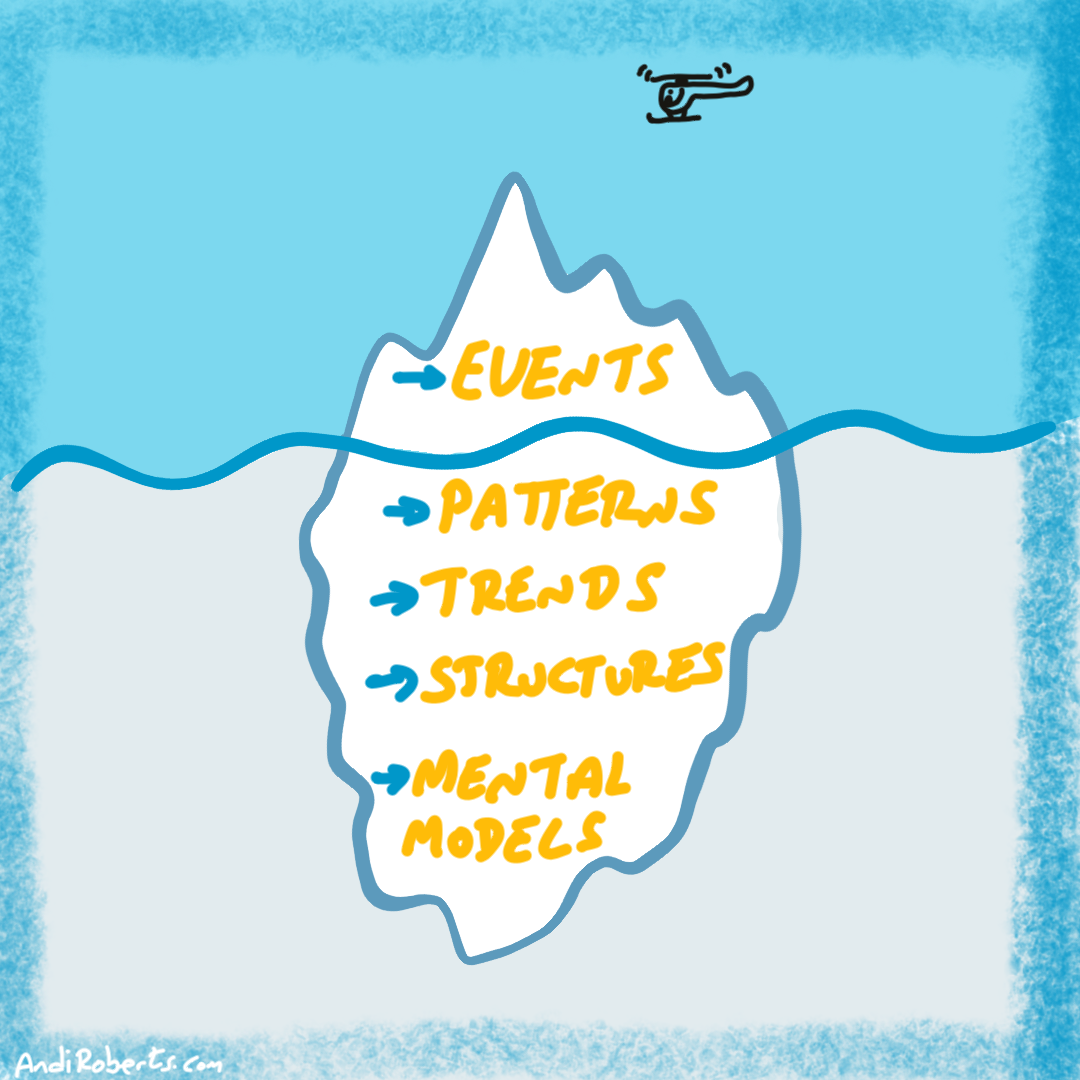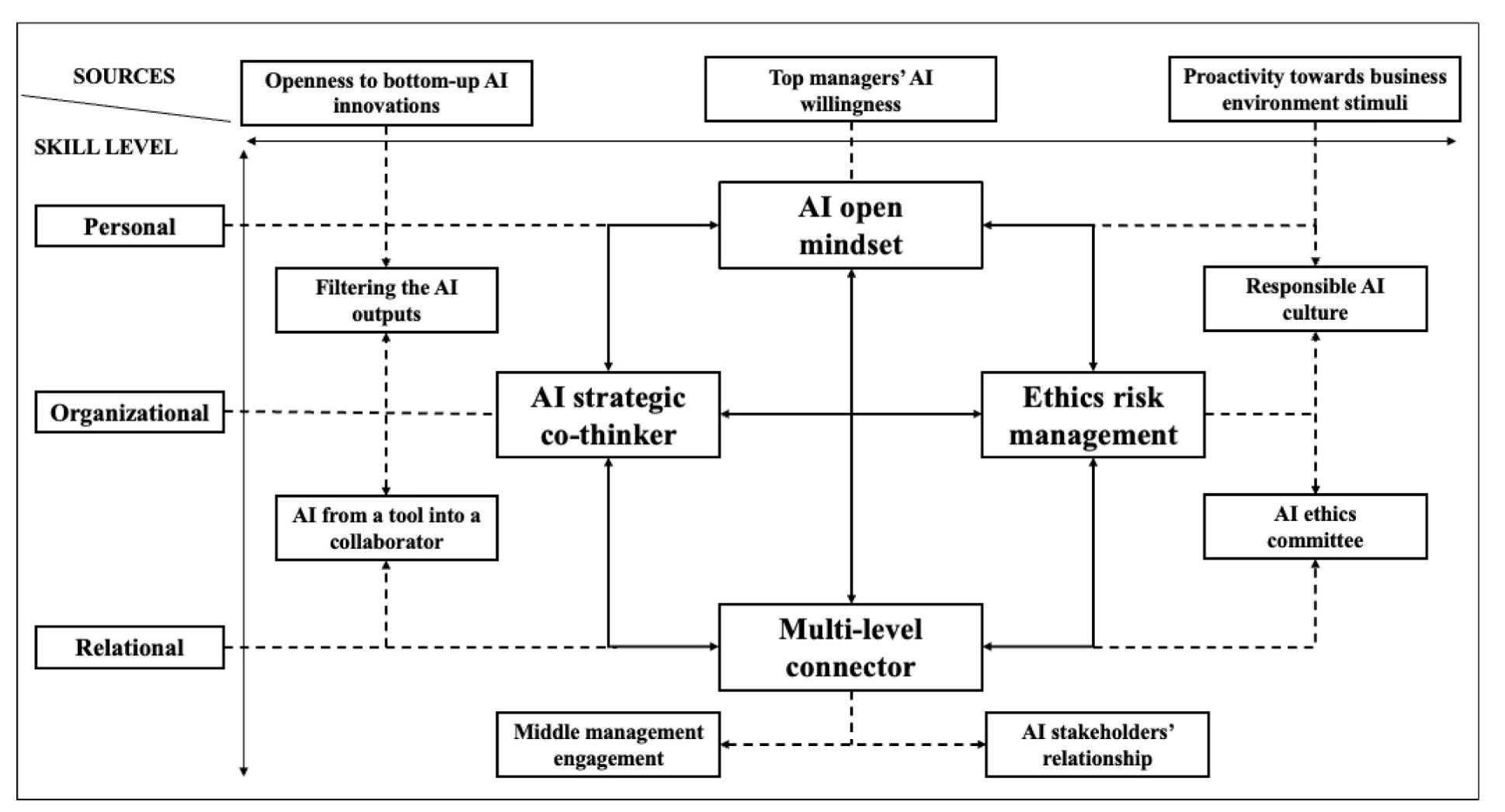Team charters and frameworks like the Team Canvas were designed to help groups find alignment by clarifying purpose, roles, values, and ways of working. They promise to bring direction and coherence to the messy reality of collaboration, offering a foundation that guides how people work together.
Yet, in practice, they often fall short. A typical charter session produces a document that feels energising on the day but fades quickly afterwards. Teams believe they have found alignment, but when deadlines tighten or priorities clash, that sense of shared understanding slips away. What began as a meaningful agreement becomes little more than a file on a shared drive.
The problem is not with the charter itself but with how it is treated. Too often it becomes a checklist or a formality, something to complete rather than a conversation to continue. A charter only matters if it remains alive in the daily life of the team. It needs to be revisited, questioned, and renewed as the work evolves.
Alignment is not a one-time event; it is a practice. The value of a charter lies less in the words on the page and more in the quality of the dialogue that created them. When people take part in shaping the agreements that define their work, they are far more likely to honour them. A charter that lives is one that keeps inviting the team back into conversation about what they are trying to achieve and how they want to do it together.
The ten problems with team charters
1) False clarity
Completing a charter can feel like genuine alignment. The words sound noble, “customer excellence,” “ownership,” “accountability”,and everyone nods along. But shared language often masks untested assumptions. Each person hears something slightly different. One sees “ownership” as personal responsibility, another as collective learning. The illusion only breaks when reality presses: priorities clash, pressure builds, something breaks down. What looked like agreement turns out to be ambiguity in disguise.
2) Too much, too soon
Charter workshops often try to do too much in too little time. The goal of producing a finished document by the end of the session creates pressure to move quickly. But meaningful alignment doesn’t come from speed or efficiency. Topics like values, roles, and decision-making involve emotions, history, and power. These are not just boxes to fill in, they are invitations to deeper conversation. When we rush to close the discussion, we settle for what is easiest to agree on and leave the more important differences unexplored. The result is a charter that reflects what was convenient to say, not what was necessary to surface.
3) Complexity reduced to boxes
Frameworks like the Team Canvas are designed to make the complex visible, but in doing so they often tidy it too much. The political, emotional, and relational layers that define how teams actually work get flattened into neat categories. Boxes marked “roles,” “decision owners,” or “values” give a sense of order, yet everyone knows that real influence flows elsewhere. Decisions still need quiet approval from senior figures, and trust moves through informal networks, not the chart. The picture looks neat, but the hidden structures that shape behaviour remain untouched.
4) Static by design
Most charters capture a moment in time and then stop moving. They describe who the team was at one point, not who it becomes. Projects evolve, people change, and the environment shifts, but the document stays frozen. Six months later, new faces have joined, priorities have changed, and yet the same charter hangs on the wall or sits untouched in a shared folder. It no longer reflects how the team actually operates. What once felt energising becomes a reminder of how quickly things move on when no one revisits the conversation.
5) Compliance over candour
Sometimes a team completes its charter simply because it has been told to. The activity becomes something to finish, not a space for real reflection. People fill in the boxes, record the result, and move on. The document may contain words like “collaboration” or “innovation,” but the discussion behind them is shallow. In these moments, the charter represents compliance rather than commitment. It shows that a process was followed, not that a shared understanding was reached.
6) Avoiding the hard stuff
Charters often highlight what teams hope for rather than what they struggle with. They celebrate trust, respect, and open communication but stay silent on what happens when things go wrong. Everyone is happy to agree that they will “assume positive intent,” but few talk about what to do when intent and impact do not match. By skipping over the difficult emotions—conflict, disappointment, frustration—the group leaves itself unprepared for the moments that test it most. The result is a charter that looks aspirational but offers little guidance when reality bites.
7) Consensus kills difference
In pursuit of harmony, teams often mistake agreement for alignment. The group avoids discomfort, choosing quick consensus over honest discussion. When someone challenges a popular view, the urge to move on is strong, and dissent is quietly set aside. The meeting feels smooth, but something important is lost. True alignment demands the courage to hold difference in the room until understanding emerges. Without that tension, the team achieves politeness rather than clarity.
8) Never revisited
Once the initial excitement of drafting a charter fades, it tends to disappear from daily life. People stop referring to it, and it gathers digital dust. Months later, someone might mention it, and the group will struggle to remember where it lives or what it contains. When they finally reopen it, the words feel distant, like an old photograph of a team that no longer exists. What was intended as a living guide becomes a relic of an earlier enthusiasm.
9) Sometimes no emotional ownership
A charter written for a team is never as powerful as one written by a team. When the document arrives fully formed from a manager or external facilitator, it feels like someone else’s language. People may nod in agreement but feel no real connection to the words. Ownership cannot be delegated; it has to be built. When everyone has a hand in shaping the principles that guide their work, those principles begin to live in daily choices. Without that process, the charter remains an artefact rather than an expression of shared intent.
10) Often not built for hybrid work
Traditional charters were created in a time when teams worked side by side. They assume shared space, shared time, and constant visibility. Hybrid and remote work unsettle all of that. Communication happens across time zones, tone is lost in messages, and relationships are built through screens. Phrases like “we will communicate often” or “we will stay connected” sound fine but mean different things in practice. Without naming how, when, and through which channels connection happens, good intentions fall into confusion. The old language of teamwork needs updating for the reality of dispersed work.

Between values and behaviour: The fluff gap
Even teams that avoid these traps often stumble into a subtler one: the “fluff gap.” Charters are full of good intentions such as “We will give feedback,” “We will respect each other,” or “We will communicate openly.” The problem is that these statements sound positive but are too abstract to shape behaviour. They describe the spirit of teamwork but not the practice of it.
Fluffy norms are comfortable to write because they avoid conflict. They allow everyone to agree quickly without clarifying what those words mean in action. The result is an illusion of alignment that collapses the moment pressure, stress, or ambiguity appears.
A charter filled with vague statements is a set of aspirations, not agreements. People interpret the same line through their own habits and history, believing they are living the charter even when they are not.
Examples:
- “We will give feedback” — but when, how, and to whom?
- “We will respect time” — does that mean punctuality, shorter meetings, or no after-hours messages?
- “We will communicate openly” — does that mean transparency, or oversharing?
This gap between values and behaviour is where many charters quietly die.
Bridging it requires precision. Each principle must be translated into concrete, observable actions by answering three questions:
- What does this look like when we are doing it well?
- How will we notice when we are not?
- What will we do to recover when we slip?
By turning abstract values into explicit behaviours, teams make their agreements coachable, measurable, and real.
Examples of translation:
- Instead of “We will give feedback,” write “We will discuss feedback monthly, beginning with what works well before what needs adjustment.”
- Instead of “We will respect time,” write “We will end meetings five minutes early and only accept invitations with clear agendas.”
- Instead of “We will communicate openly,” write “We will summarise meeting decisions in our shared space within 24 hours.”
Clarity turns virtue into coordination. It makes teamwork visible.
Making team charters work: Eight shifts that bring them to life
1) From agreement to alignment
Agreement feels satisfying. Everyone nods, the words sound good, and the room feels united. But alignment is something deeper. It is not about saying yes to the same phrases, but about understanding how those phrases live in practice. Teams that rush to consensus often miss this distinction. They write down “collaboration” or “trust” without asking what those ideas look like when deadlines close in or when priorities collide.
To move from agreement to alignment, a team needs to slow down and test its language against reality. Questions such as “What would this value look like under pressure?” or “When might we interpret this differently?” turn shared words into shared meaning. The conversation may take longer, but it prevents the false comfort of surface harmony. Alignment happens when people leave the room with the same mental picture, not just the same vocabulary.
2) From assumptions to inquiry
Most charters are written as declarations. They assume agreement on what values mean, on what success looks like, and on what the team will do when tensions appear. Inquiry takes a different route. It treats the charter not as a statement of truth, but as a set of questions worth exploring. Asking “What would make this value difficult to live by here?” invites honesty about the real conditions that shape behaviour. Asking “What evidence would tell us we are succeeding?” connects values to action instead of aspiration.
Inquiry changes the tone of the work. It shifts the team from certainty to curiosity. Rather than trying to prove alignment, members learn to explore their differences and update their understanding as they go. When a charter becomes a space for inquiry, it grows with the team. It stops being something to finish and becomes something to think with.
3) From boxes to systems
Frameworks such as the Team Canvas are helpful because they bring structure to a complex task. But real teams rarely fit neatly into boxes. The hidden dynamics of influence, trust, and informal authority shape how work gets done, and they rarely show up in tidy templates.
To make a charter meaningful, the team must name how the system actually behaves. Where does information get stuck? Who really shapes decisions? Which relationships matter most? These questions uncover the social architecture that determines how things flow. A charter that reflects this reality becomes a map people can use, not a fantasy of how they wish things worked. The process of mapping the system together also builds transparency. People begin to see their part in the network rather than thinking only in terms of their own tasks or roles.
4) From compliance to ownership
A charter written by a few and handed to many will never inspire commitment. When people feel something is being done to them, they comply rather than engage. Ownership grows through participation, not instruction.
Instead of starting with a template, begin with stories. Ask each person to recall a time when teamwork felt effortless, effective, or joyful. Listen for patterns about what made those experiences work. Perhaps it was honesty in tough moments, or quick feedback, or a shared sense of humour. Let those stories shape the language of the charter. When people see their own experiences reflected in the document, it becomes a mirror of their identity rather than a set of external expectations.
Writing in the team’s own words also matters. A charter full of corporate language sounds official but feels distant. A charter written in the team’s natural tone feels owned. When the language belongs to everyone, the behaviour tends to follow.
5) From idealism to repair
Most charters describe the world as we wish it to be. They talk about trust, respect, and openness. Yet the moments that define a team are often the ones where those values are tested. A living charter needs to anticipate failure as much as aspiration.
Including a few lines about how the team will respond when things go wrong changes the document’s character. It turns idealism into realism. Agreeing in advance how to repair trust, revisit a broken promise, or raise a difficult issue builds resilience. It creates a shared understanding that conflict is not a crisis but a signal for conversation.
The ability to repair is the real measure of culture. Teams that can talk about mistakes and recover from them tend to outlast those that avoid the topic altogether. A charter that names how people will come back together after tension acknowledges that success is rarely smooth, and that relationships are maintained, not assumed.
6) From harmony to honesty
Many teams mistake politeness for cohesion. They rush to agreement, smooth over tension, and treat difference as discomfort to be managed. But genuine alignment depends on honest conversation. The most useful charters make space for disagreement by naming the tensions that give the team its energy.
It helps to write those tensions down. You might include a section called “Healthy Differences We Will Maintain” and list the natural trade-offs in your work, such as creativity versus consistency or speed versus accuracy. By naming these tensions, the team gives itself permission to discuss them openly. Conflict becomes part of the design rather than a failure of it.
Honesty does not erode trust; it deepens it. When people know that difference is welcome, they stop performing agreement and start contributing ideas. A charter that values candour over comfort becomes a tool for real progress, not a script for polite conversation.
7) From document to practice
Even the most thoughtfully written charter loses power if it is never revisited. The goal is not to produce a perfect document, but to build a habit of reflection. Turning the charter into a small ritual keeps it alive in daily work.
At the end of a sprint, a project review, or a monthly meeting, the team can take a few minutes to ask, “Which part of our charter have we lived well?” and “Which part needs attention?” These short, regular moments bring the words back into view. Over time, the charter becomes a rhythm, part of how the team talks about itself.
When the document evolves through these conversations, it begins to teach the team about its own behaviour. The charter becomes less about compliance and more about learning. It moves from being a static reference to being a living pattern of practice.
8) From co-location to connection
Many charters were designed in an era when teams worked side by side, reading body language and resolving misunderstandings in the moment. Hybrid and remote work have changed that context. Visibility, communication, and fairness now depend on deliberate choices rather than proximity.
A modern charter must name these new realities. Clarity about response times, meeting etiquette, and preferred communication channels makes collaboration predictable across distance. It also helps to define what presence means when not everyone shares the same space. Some teams agree to rotate meeting times, or to use asynchronous updates that respect time zones. Others commit to keeping cameras on for certain conversations and off for others.
These small agreements build trust that travels. When people know what to expect from one another, they spend less energy managing uncertainty and more energy on shared goals. The charter becomes a bridge between different working lives, offering fairness and consistency in place of assumption.
Conclusion: Why this matters
Team charters often begin as a response to pressure. A leader wants alignment, a consultant suggests structure, or a new project needs clarity. The document that follows promises to bring people together, yet it often becomes a snapshot of early enthusiasm rather than a living record of how the team works. The deeper purpose of a charter is not agreement but shared awareness. It is an ongoing conversation about what it means to be in relationship while doing the work.
These eight shifts invite teams to see the charter as something more than a framework. They encourage leaders to look beyond compliance and into the everyday patterns that shape connection, trust, and accountability. When a charter is treated as a conversation rather than a product, it becomes part of the team’s learning system. It evolves as people evolve. It reminds them of what they have chosen together and why that choice still matters.
What brings this to life is not process but presence. The document itself cannot create alignment; only the conversations that keep it current can do that. Each time a team pauses to revisit its commitments, it strengthens both its clarity and its sense of belonging. In this way, the charter becomes a quiet act of leadership, a practice of returning, reflecting, and renewing the promises that hold the group together.
A team charter is not a product to complete but a conversation to keep alive. Each of these shifts invites a group to move from procedure to relationship, from writing about their work to working on how they relate. The most effective teams use their charter not as proof of alignment, but as a way to keep discovering what alignment really means. When the document reflects the living system of the team, it stops being a statement and starts being a story they continue to write together.
Reflective questions for the leader
- When did our charter last feel alive, and what made it so?
- What conversations about how we work together have we avoided or postponed?
- If the charter were a mirror, what truth about our team would it show us today?
Do you have any tips or advice for crafting an effective team charter?
What has worked for you?
Do you have any recommended resources to explore?
Thanks for reading!





Leave A Comment